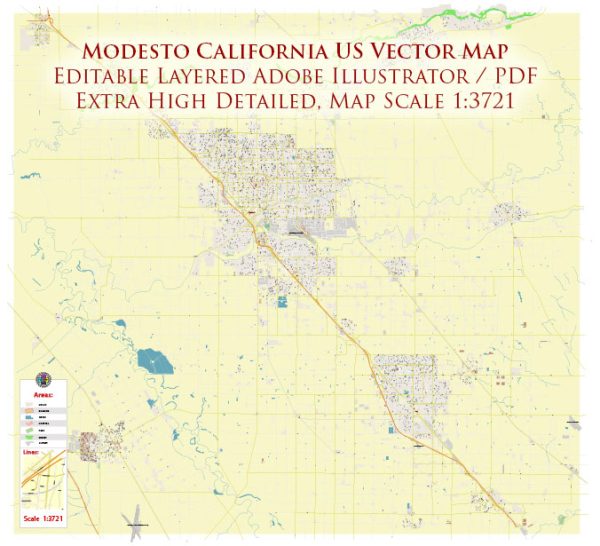Modesto, California, has a rich history of urban development that reflects the broader trends and challenges faced by many American cities. Here is an overview of the key aspects of Modesto’s urban development history:
- Early Settlement and Agriculture (19th Century): Modesto’s history dates back to the mid-19th century when it was originally established as a station on the Central Pacific Railroad in 1870. The area was primarily agricultural, and the city’s growth was closely tied to the development of irrigation systems that allowed for successful farming. The completion of the Tidewater Southern Railway in 1911 further facilitated transportation and trade, contributing to the city’s economic development.
- Growth and Economic Expansion (Early to Mid-20th Century): The early to mid-20th century saw continued growth in Modesto, driven by the expansion of agricultural activities. The city became a hub for the cultivation of crops such as grapes, nuts, and fruits. The development of the irrigation infrastructure, coupled with improvements in transportation, helped Modesto become a key player in California’s agricultural economy.
- Post-World War II Suburbanization (1950s-1960s): Like many American cities, Modesto experienced significant growth and suburbanization in the post-World War II period. The availability of affordable housing, the expansion of automobile infrastructure, and the desire for suburban living led to the development of residential neighborhoods outside the city center. This era marked the beginning of a shift from an agrarian economy to a more diverse economic base.
- Commercial and Retail Development (Late 20th Century): As Modesto continued to grow, the city saw the development of commercial and retail centers. Shopping malls, business districts, and entertainment venues became prominent features of the urban landscape. The expansion of educational and healthcare institutions further contributed to the city’s development as a regional center.
- Challenges and Redevelopment (Late 20th Century to Present): Modesto, like many cities, faced challenges related to urban decay, infrastructure needs, and social issues. Efforts to revitalize the downtown area and address issues such as homelessness and crime have been ongoing. Redevelopment projects aimed at preserving historical structures and creating a more vibrant urban core have been part of the city’s strategy to enhance its overall livability.
- Diversification of Economy (Late 20th Century to Present): In recent decades, Modesto has worked to diversify its economy beyond agriculture. The city has attracted industries such as manufacturing, technology, and healthcare. This diversification has helped make Modesto more resilient to economic fluctuations and positioned it as a multifaceted urban center.
- Urban Planning and Sustainability: In response to the challenges of growth and development, Modesto has engaged in urban planning initiatives focused on sustainability, environmental conservation, and smart growth. Efforts to improve public transportation, enhance green spaces, and promote mixed-use development have become integral parts of the city’s urban planning strategies.
Understanding Modesto’s history of urban development provides insight into the city’s evolution and the broader trends that have shaped urban areas across the United States. The ongoing efforts to balance economic growth with sustainability and community well-being will likely continue to shape Modesto’s urban landscape in the future.


 Author: Kirill Shrayber, Ph.D.
Author: Kirill Shrayber, Ph.D.